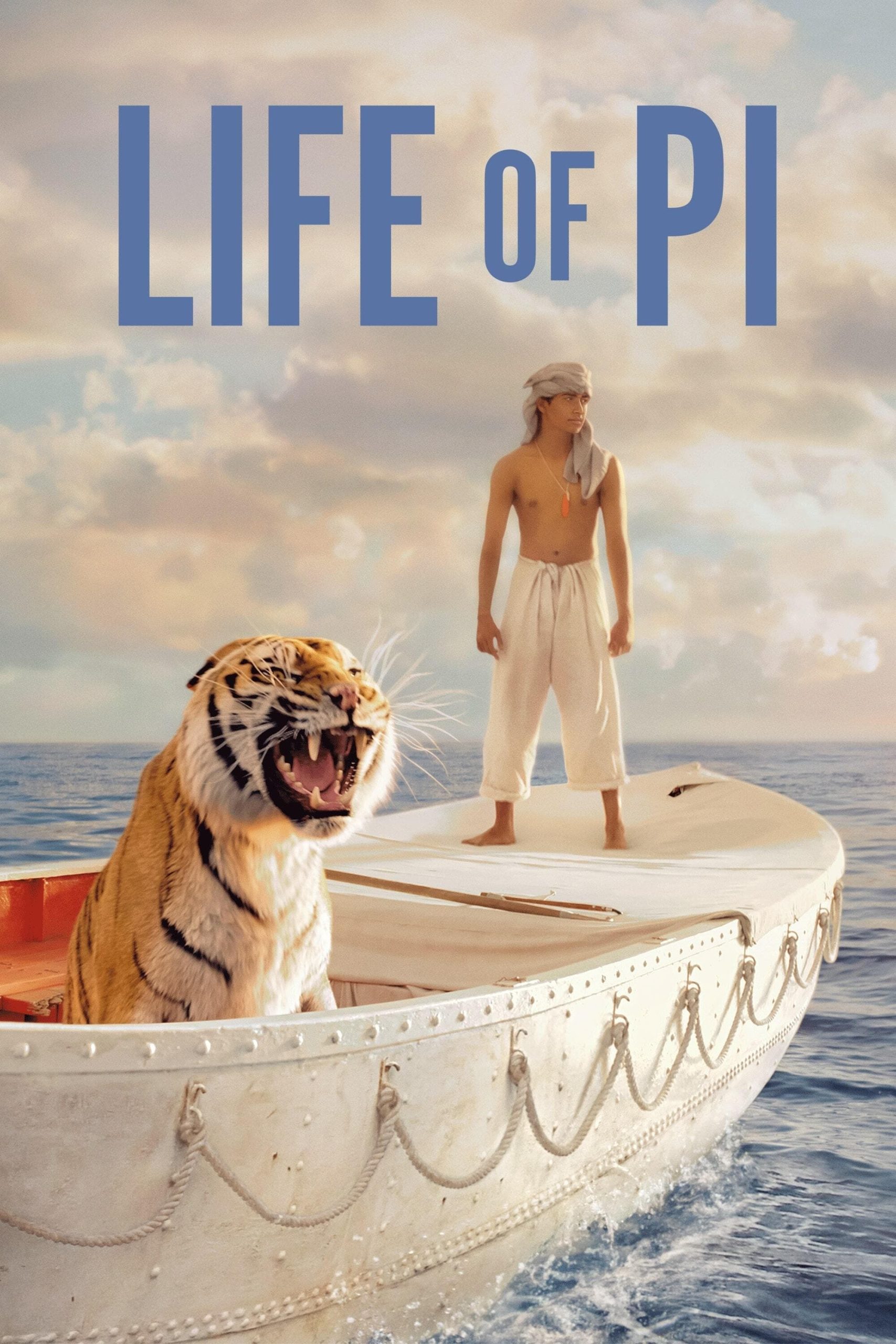08 Feb Life of Pi (2012)
30 Million Sephiroth
How is it that Scorsese can get 3D so wrong and someone like Ang Lee get it so right?
Sure, there is some dimensional silliness — a hummingbird in the first few moments… a message thrown into the water that lands in our laps — but the general philosophy here is to use the technology to define space. Usually, we are given an array of objects, but here the goal is space itself.
I have been seeing very few movies recently, but I think so far as the handling of space, this film is important — a real advance over what went before. Compare for instance the handling of the water in the shipwreck to that of ‘Titanic’’or ‘Perfect Storm’ or ‘White Squall’; The water here is architectural, dynamic but conceived as a whole. When I’ve noted previous advances in the cinema of space, they have been less in the architecture and more in the introduction of height, the position of the virtual camera and the emotions evoked by how that camera moves.
Following the ideas of the book about the folding of experience, story-telling and religious ecstasy, we have visual metaphoric blending of underwater, various effects on the surface of water, stars, storms and modes of fluorescence in each of these. The notion is that the story with the tiger is likely fiction, and that the 'real' story was not ‘as good’; We have strong hints that this is so in the written dialog, so the cinematic notion of merging dynamics below the sea with action above the sea makes sense. This begins early in the story with a shot of the famed swimming pool after which our hero is named. Late in the shot we realize the camera is underwater. Soon, the water becomes sky.
But because we have shared what came before with our own eyes, we can’t unknow it. It becomes folded reality.
Another example: early we see a Hindu ceremony with thousands of candles floating on water. The father-voice-of-reason says ‘do not be fooled by the lights’; Shortly thereafter we have the lights on the ship moving underwater and presumably triggering the untrusted narration. These lights were previously on the surface, and it seemed to me that the same visual cues were present in these — and later — lights as those we saw in the ceremony.
This sort of visual coherence is only possible now where essentially every background is a synthesised one. When you create the world, you can create it your way.
So the larger framing has an underwater with the ship named after the kabbalistic (recent Kabbalah, not genuine historical Kabbalah) notion of truth coalescing around the most attractive story. That ship is lit — again a kabbalistic reference, and the lights morph to totems: animals, symbols and memories. The sprites used in the software to model the flow of particles under the sea is used to model the turbulence on the surface and sky. Further, an associated notion is that everything must be considered as a whole situated assembly; in story terms that is the truth of coherence; in cinematic terms it is the focus on the coherence of space.
Lee has always done something like this, even in his student films about dinner tables. In ‘Crouching Tiger’ the fight choreography was calligraphic and was shown that way, so this was expected. But it IS an advance in the vocabulary and should be seen if only for the cinematic thrill of being present when our imagination advances a step. Note especially how the final shot does a reverse rack where the background moves closer after his feline self has ‘left him’;
But it fails as a compelling narrative for me. The kid in the boat seemed too Mowgli Disney perfect and not sufficiently broken to be believable. Though the cinematic tone is well thought out, it is presented too much as reality for me. The distance in abstraction between the framing device (the adult recounting a version of the story) and the story is too close. We might have done better to have the framing bits use a different technique, and the tiger be more supernatural.
We do have some supernatural elements: the magical whale, the storm that seizes the written story, the fact that corpses and excrement vanish from the always sterile boat. The magical island's tooth (truth). The fact that a Japanese ship packs a survival manual in English. But these are plot points, not parts of the world. Tarsem Singh might have done better in this regard.
We can assume that the ‘alternative story’ was shot, because you wouldn’t hire Gérard Depardieu for one part of one scene. Perhaps we can see it in a recut version. Hey, if Decker can be a replicant in later versions of ‘Bladerunner’ maybe Anandi can be a life-dancer, the real narrator.
Posted in 2013
Ted’s Evaluation — 3 of 3: Worth watching.



No Comments